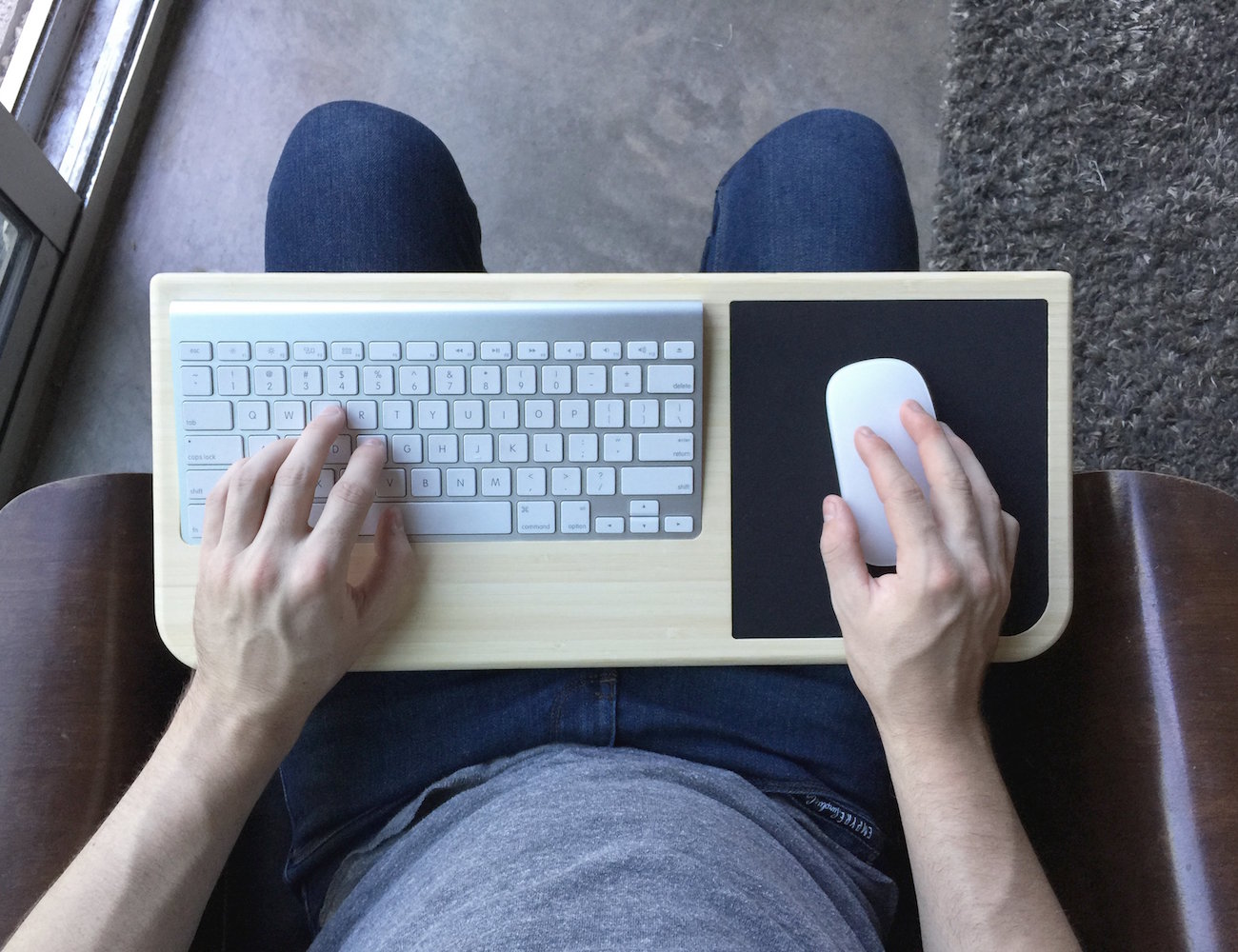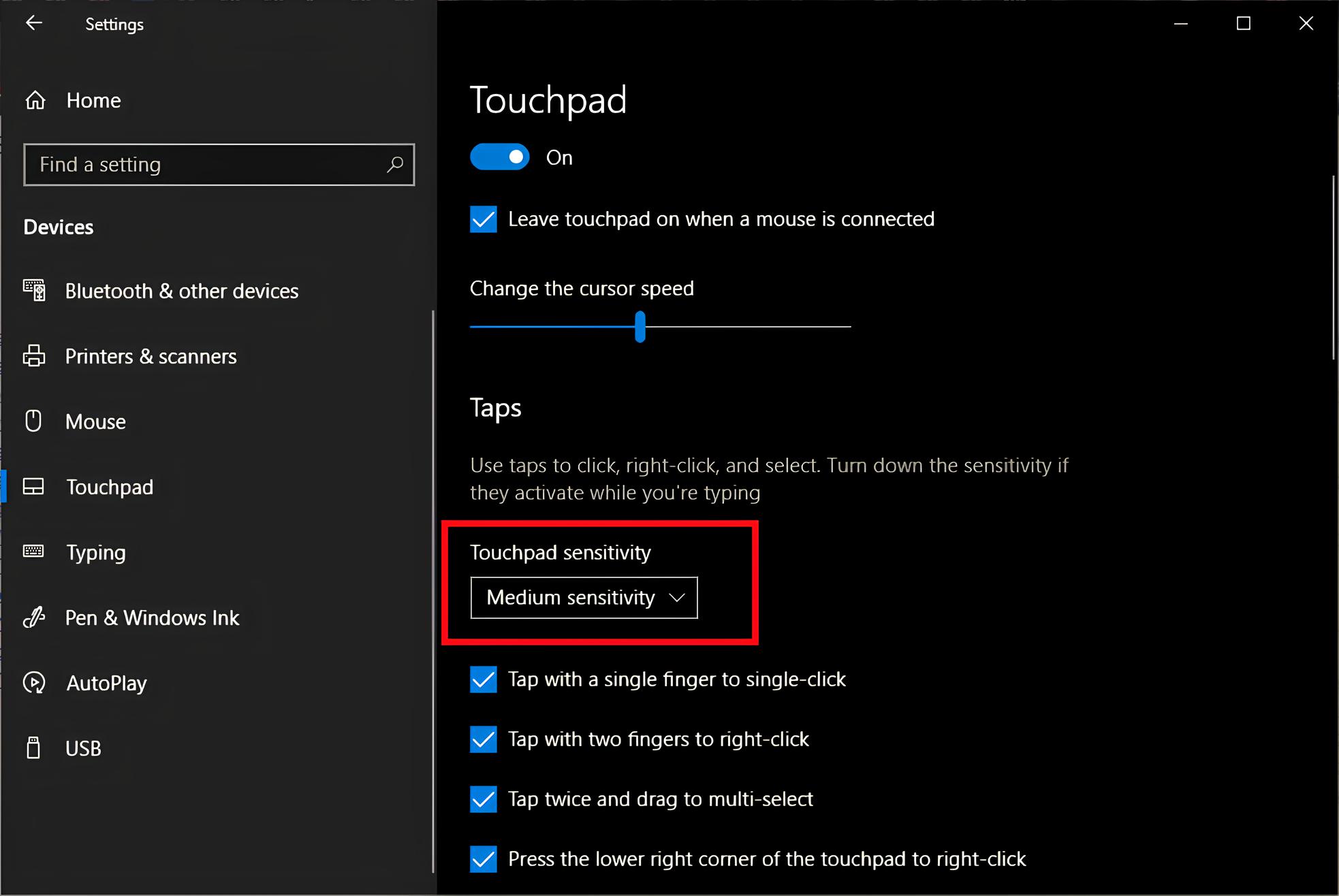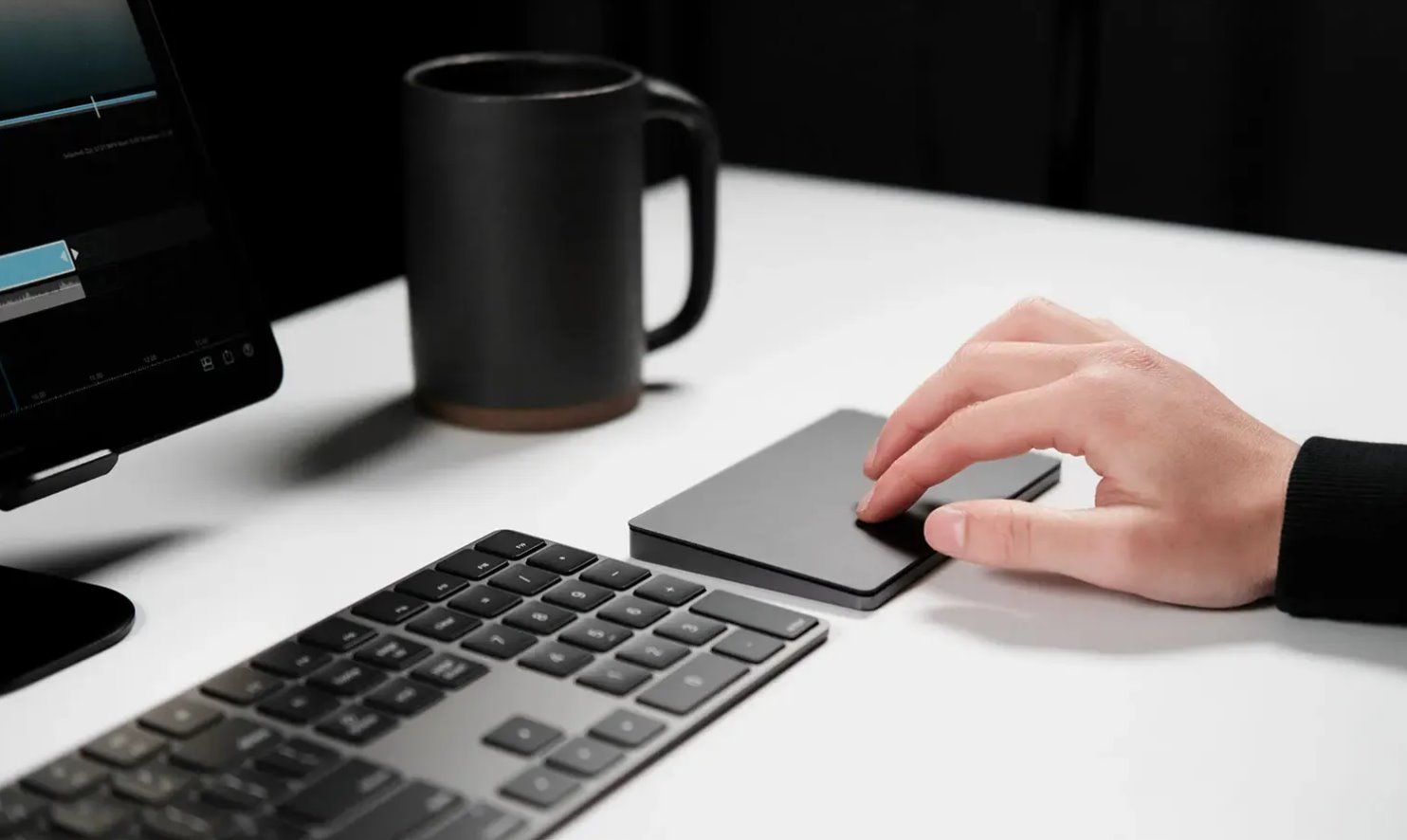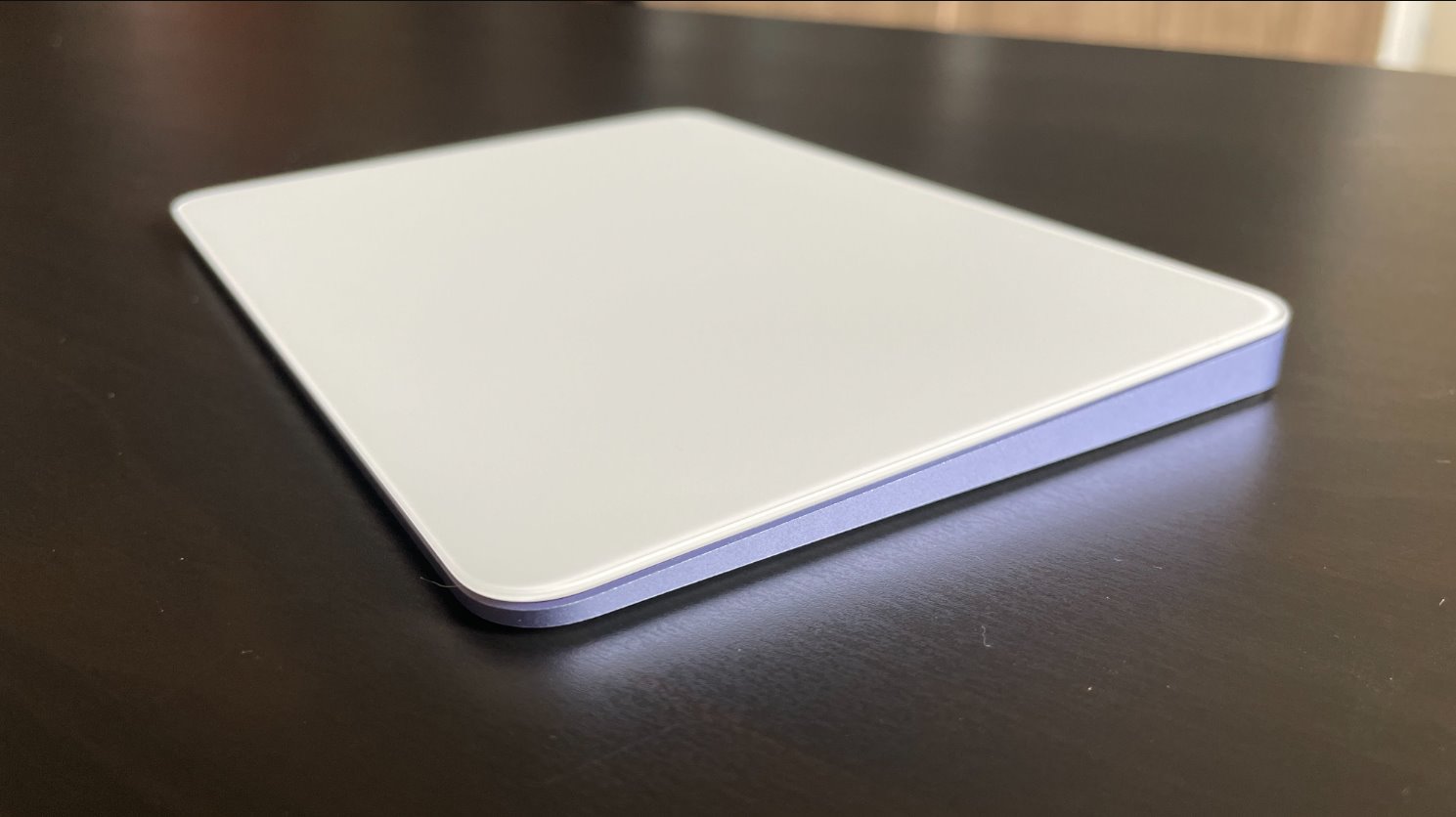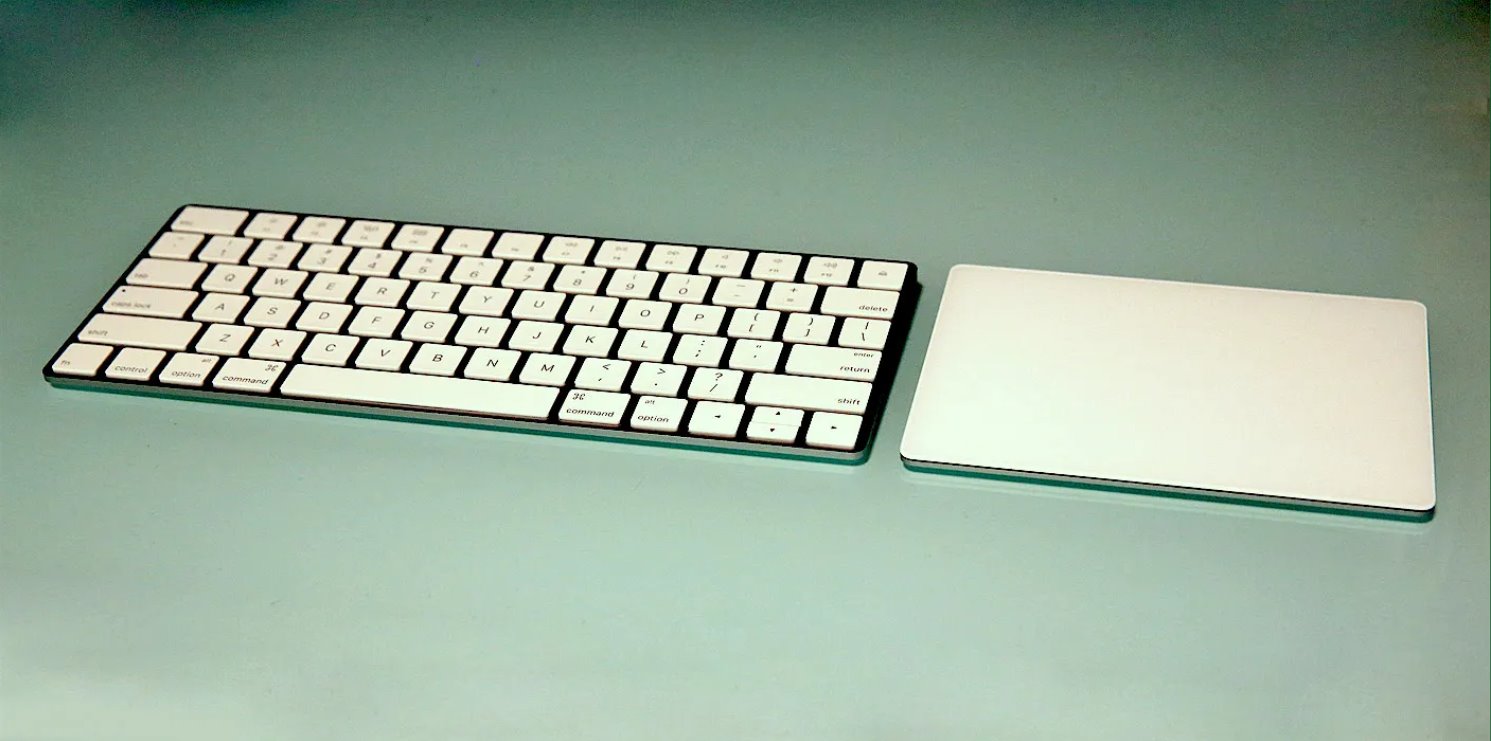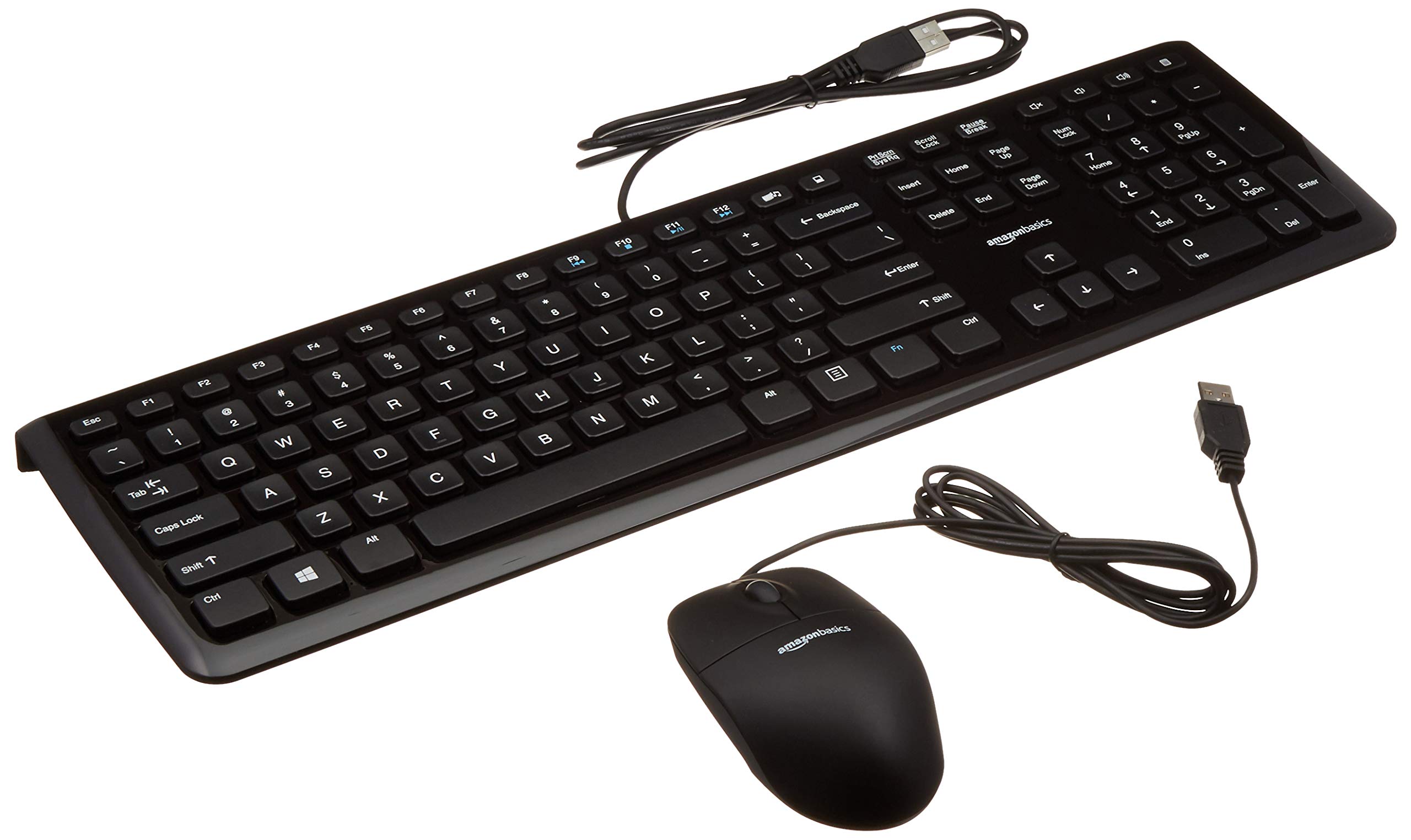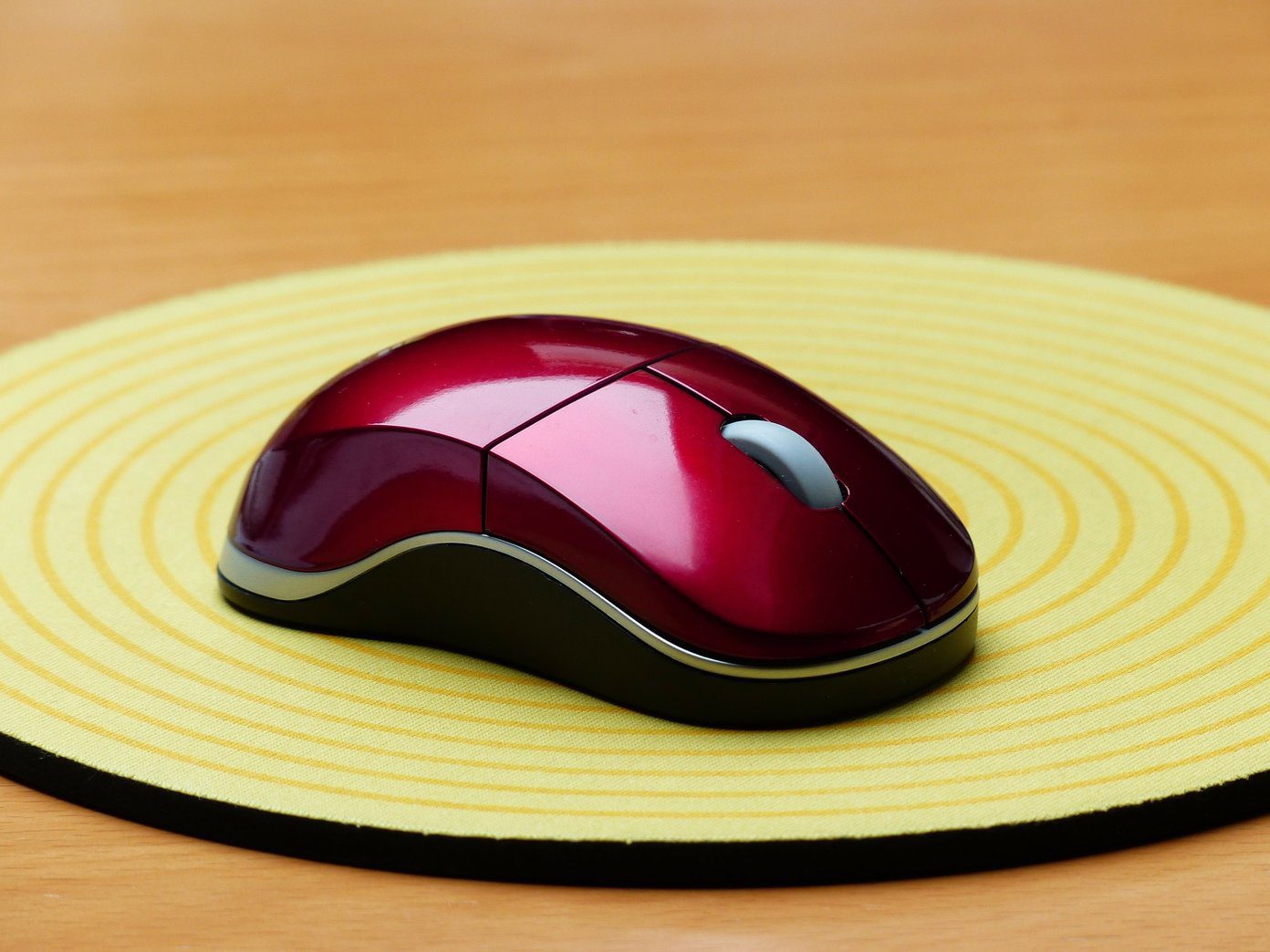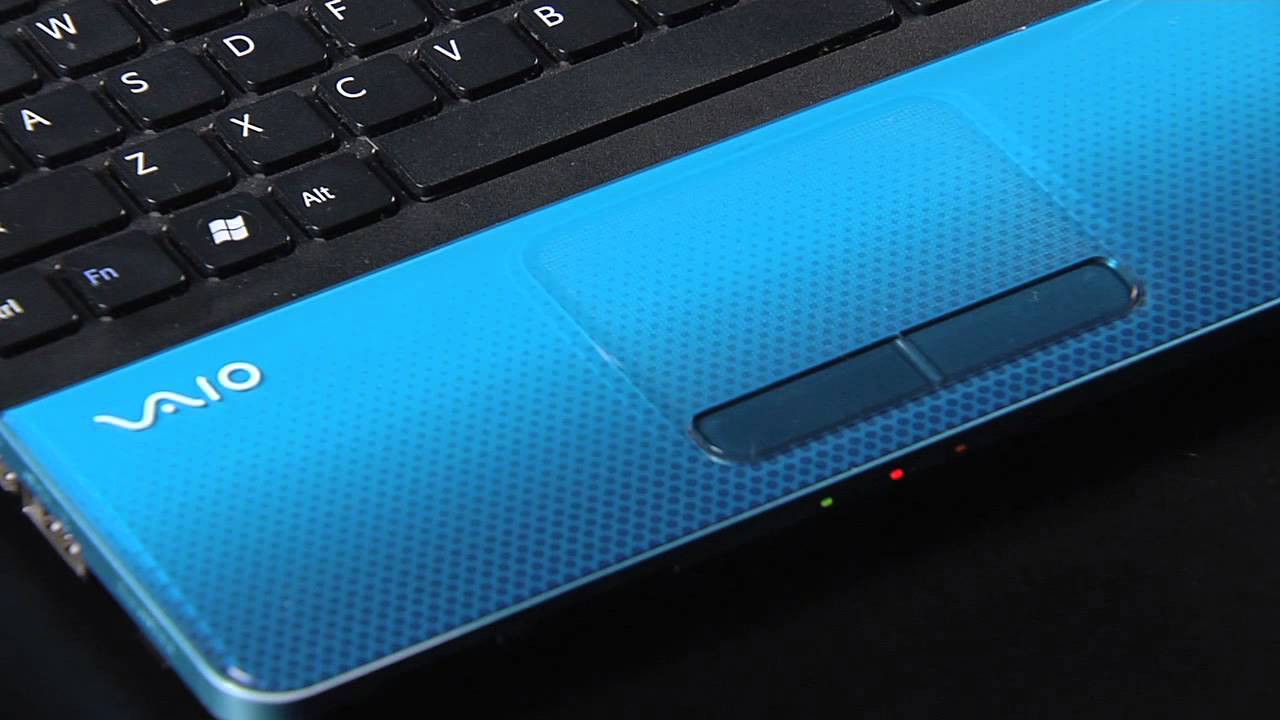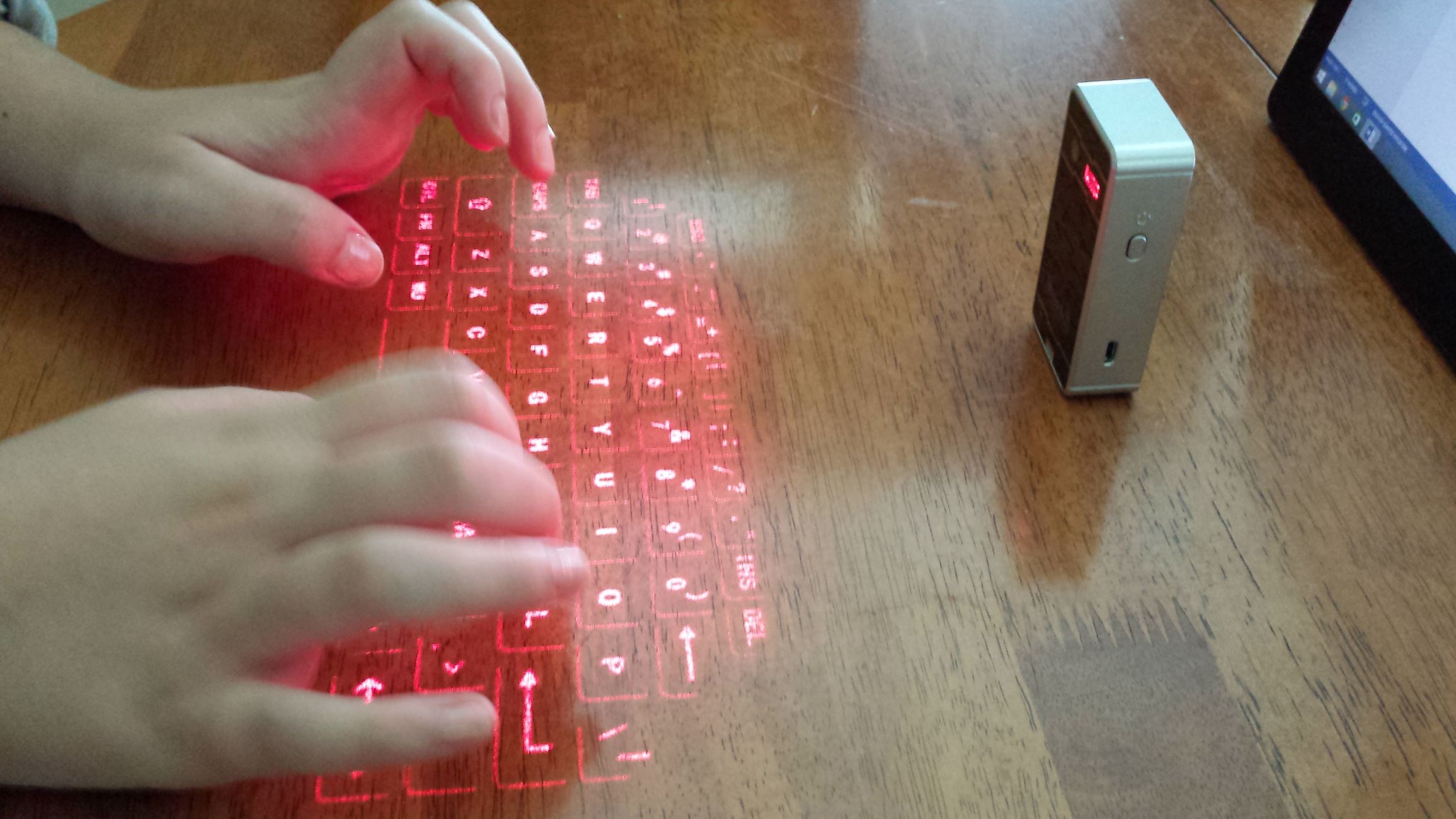Introduction
Are you finding it challenging to control the cursor on your laptop due to its overly sensitive mouse pad? Dealing with a hyper-responsive touchpad can be frustrating, causing the cursor to jump around unexpectedly and making precision tasks difficult to accomplish. Fortunately, there are several effective strategies to alleviate this issue and regain control over your laptop's mouse pad sensitivity.
In this comprehensive guide, we will explore various methods to make your laptop mouse pad less sensitive. Whether you're a seasoned tech enthusiast or a casual user, implementing these solutions can significantly enhance your overall computing experience. From adjusting sensitivity settings to utilizing third-party software, we'll cover a range of practical approaches to address this common dilemma. By the end of this article, you'll be equipped with the knowledge and tools necessary to tailor your laptop's mouse pad sensitivity to your specific preferences.
Let's delve into the details and discover how you can optimize your laptop's mouse pad for smoother navigation and improved usability. Whether you're working on intricate design projects, engaging in intense gaming sessions, or simply browsing the web, achieving the ideal mouse pad sensitivity is key to maximizing your productivity and enjoyment. So, without further ado, let's explore the steps to fine-tune your laptop's mouse pad sensitivity and elevate your digital interactions to a whole new level.
Adjusting Mouse Sensitivity Settings
One of the primary methods to address a sensitive laptop mouse pad is to adjust the sensitivity settings within the operating system. Both Windows and macOS offer built-in options to customize the behavior of the touchpad, allowing users to modify the speed and responsiveness of the cursor movement. Here’s how you can fine-tune the mouse sensitivity settings on your laptop:
- Windows: If you’re using a Windows-based laptop, navigate to the Control Panel or Settings and locate the “Mouse” or “Touchpad” settings. Within this menu, you can adjust the pointer speed, enable or disable enhanced pointer precision, and customize additional touchpad options. Experiment with different settings to find the optimal sensitivity level that suits your preferences and usage patterns.
- macOS: For MacBook users and those with macOS-based laptops, the mouse sensitivity settings can be accessed through the “System Preferences” menu. Within the “Trackpad” or “Mouse” settings, you can fine-tune the tracking speed and enable other touchpad features. By adjusting these settings, you can tailor the mouse pad sensitivity to align with your desired level of control and precision.
By customizing the sensitivity settings, you can achieve a more responsive and predictable cursor movement, mitigating the challenges posed by an overly sensitive touchpad. Experimenting with different configurations and observing the impact on cursor behavior can help you identify the most comfortable and effective settings for your specific needs.
Furthermore, some laptops offer advanced touchpad settings, such as palm rejection and multi-finger gestures, which can also influence the overall user experience. Exploring these options and incorporating them into your customization efforts can contribute to a more seamless and tailored touchpad interaction.
Whether you’re engaged in precise graphic design work, navigating complex spreadsheets, or simply browsing the web, adjusting the mouse sensitivity settings is a fundamental step towards optimizing your laptop’s touchpad for enhanced usability and comfort.
Cleaning the Mouse Pad
Over time, the accumulation of dust, oils, and debris on the surface of your laptop’s mouse pad can contribute to erratic cursor behavior and heightened sensitivity. Cleaning the mouse pad regularly is a simple yet effective way to address these issues and restore optimal functionality to the touchpad. Here are the steps to clean your laptop’s mouse pad:
- Gentle Wiping: Begin by powering off your laptop and using a soft, lint-free cloth or microfiber towel to gently wipe the surface of the mouse pad. This can help remove superficial dust and smudges that may be impacting its sensitivity.
- Using Isopropyl Alcohol: For more stubborn stains or oily residue, lightly dampen the cloth with isopropyl alcohol and carefully clean the mouse pad in a circular motion. Be sure to use a minimal amount of alcohol to avoid saturating the touchpad.
- Cleaning the Edges: Pay attention to the edges and corners of the mouse pad, as these areas are prone to accumulating debris. Use a soft-bristled brush or cotton swab to gently dislodge any particles that may be affecting the touchpad’s performance.
- Drying Time: Allow the mouse pad to air dry completely before powering on your laptop. This will ensure that any residual moisture from the cleaning process has evaporated, preventing potential damage to the touchpad or internal components.
By incorporating regular cleaning into your laptop maintenance routine, you can minimize the impact of external factors on the mouse pad’s sensitivity and responsiveness. This practice not only promotes a more consistent touchpad experience but also contributes to the overall hygiene and longevity of your device.
Additionally, if your laptop features a removable or interchangeable mouse pad, consider exploring the option of replacing the pad if cleaning efforts do not yield the desired results. Some laptops allow for easy removal and replacement of the mouse pad, providing a convenient solution for addressing persistent sensitivity issues.
By maintaining a clean and well-maintained mouse pad, you can optimize the performance and reliability of your laptop’s touchpad, ensuring a smoother and more predictable user experience across various tasks and applications.
Using a Mouse Pad Cover
Employing a mouse pad cover is a practical and versatile approach to mitigating the sensitivity of your laptop’s touchpad. These covers, often made of specialized materials designed to enhance tracking precision and reduce friction, offer several benefits that can contribute to a more controlled and consistent touchpad experience.
Here are some advantages of using a mouse pad cover:
- Enhanced Traction: A mouse pad cover provides a uniform and optimized surface for cursor movement, reducing the likelihood of erratic or overly sensitive touchpad behavior. The enhanced traction facilitates smoother and more predictable navigation, especially during intricate tasks that demand precision.
- Customized Thickness and Texture: Mouse pad covers are available in various thicknesses and textures, allowing users to select a cover that aligns with their desired level of touchpad responsiveness. Whether you prefer a softer, more cushioned surface or a firmer, low-friction texture, there are options to suit diverse preferences.
- Protection and Maintenance: In addition to improving touchpad performance, a cover serves as a protective barrier against dust, spills, and general wear and tear. By shielding the original mouse pad surface, the cover helps maintain its integrity and reduces the likelihood of sensitivity issues stemming from external contaminants.
- Portability and Adaptability: Mouse pad covers are lightweight and portable, making them an ideal accessory for users who frequently work in varied environments. Whether you’re using your laptop at home, in a coffee shop, or during travel, the cover can provide a consistent touchpad experience across different surfaces.
When selecting a mouse pad cover, consider factors such as compatibility with your laptop’s dimensions, the intended usage scenario, and your personal preferences regarding touchpad responsiveness. By choosing a cover that aligns with your specific needs, you can effectively tailor the sensitivity of your laptop’s touchpad to enhance comfort and productivity.
Furthermore, some mouse pad covers incorporate additional features such as wrist rests, ergonomic designs, and customizable patterns, offering a blend of functionality and personalization. Exploring these options can lead to an even more tailored and enjoyable touchpad experience.
By integrating a mouse pad cover into your laptop setup, you can exert greater control over the sensitivity of the touchpad, fostering a more comfortable and consistent user experience across a wide range of tasks and applications.
Updating Mouse Drivers
Ensuring that your laptop’s mouse drivers are up to date is crucial for optimizing touchpad performance and addressing sensitivity issues. Mouse drivers serve as the communication link between the operating system and the touchpad hardware, influencing its responsiveness and functionality. By updating these drivers, you can leverage potential enhancements, bug fixes, and performance optimizations provided by the manufacturer. Here’s how you can update your laptop’s mouse drivers:
- Windows: If you’re using a Windows-based laptop, navigate to the Device Manager by right-clicking the Start button and selecting “Device Manager.” Expand the “Mice and other pointing devices” category, right-click on your touchpad device, and choose “Update driver.” You can then opt to search for updated driver software automatically. Alternatively, you can visit the manufacturer’s website to download and install the latest drivers for your specific touchpad model.
- macOS: For MacBook users and those with macOS-based laptops, driver updates for the touchpad are typically included in macOS system updates. Ensure that your system is set to receive automatic updates, and regularly check for available updates through the “System Preferences” menu. This ensures that your touchpad drivers are kept current with the latest improvements and compatibility enhancements.
By keeping your mouse drivers updated, you can potentially resolve sensitivity issues stemming from outdated or incompatible software. Manufacturers often release driver updates to address performance irregularities, refine touchpad behavior, and introduce new features that can positively impact the overall user experience.
Furthermore, driver updates may also include firmware enhancements for the touchpad, optimizing its response to user input and refining its sensitivity calibration. These improvements can contribute to a more refined and consistent touchpad experience, aligning its behavior with your preferences and usage patterns.
Regularly checking for and applying mouse driver updates is a proactive measure that can help maintain the optimal functionality and responsiveness of your laptop’s touchpad. By leveraging the latest software enhancements provided by the manufacturer, you can mitigate sensitivity issues and ensure a more reliable and tailored touchpad experience.
Using Third-Party Software to Adjust Sensitivity
For users seeking advanced customization options and fine-grained control over their laptop’s touchpad sensitivity, third-party software can offer a wealth of additional features and adjustments beyond those provided by the operating system. These specialized applications are designed to empower users with a diverse array of touchpad customization tools, allowing for precise calibration and tailored responsiveness. Here’s how you can utilize third-party software to adjust the sensitivity of your laptop’s touchpad:
- Feature-Rich Customization: Third-party touchpad software often provides an extensive range of customization options, including sensitivity sliders, acceleration settings, gesture customization, and palm rejection controls. These features enable users to fine-tune the touchpad behavior to match their specific preferences and usage scenarios.
- Gesture and Multi-Touch Configuration: Advanced touchpad software allows users to define and customize multi-finger gestures, tap zones, and scrolling behavior, enhancing the overall touchpad experience. By tailoring these gestures and touchpad actions, users can optimize their workflow and streamline common tasks.
- Enhanced Compatibility: Third-party touchpad software is often designed to be compatible with a wide range of laptop models and touchpad hardware, ensuring that users can benefit from its features regardless of their device’s manufacturer or specifications.
- Driver Integration and Optimization: Some third-party touchpad software integrates directly with the laptop’s existing touchpad drivers, enhancing their functionality and enabling additional customization options that may not be available through standard driver settings.
By leveraging third-party touchpad software, users can unlock a new level of control and personalization, allowing them to tailor the touchpad sensitivity and behavior to align with their unique preferences and workflows. Whether you’re a creative professional seeking precise cursor control for design tasks or a multitasking user in need of efficient gesture-based navigation, these software solutions offer a comprehensive toolkit for optimizing touchpad performance.
Furthermore, many third-party touchpad software applications receive regular updates and feature enhancements, ensuring that users can continuously benefit from the latest advancements in touchpad customization and functionality. This ongoing support and development contribute to a dynamic and evolving touchpad experience, adapting to the changing needs and expectations of users.
By exploring third-party touchpad software options, users can expand their customization capabilities and unlock a rich array of features to fine-tune touchpad sensitivity, responsiveness, and gesture controls, enhancing the overall usability and comfort of their laptop’s touchpad.
Conclusion
Addressing the sensitivity of your laptop’s mouse pad is essential for achieving a comfortable and precise touchpad experience. By implementing the strategies outlined in this guide, you can effectively tailor the touchpad sensitivity to align with your specific preferences and usage patterns, enhancing your overall computing experience.
From adjusting sensitivity settings within the operating system to leveraging third-party software for advanced customization, you have a range of effective tools at your disposal to optimize touchpad performance. Additionally, maintaining a clean mouse pad and considering the use of a mouse pad cover can further contribute to mitigating sensitivity issues and promoting consistent touchpad functionality.
Regularly updating mouse drivers is a proactive measure that can help ensure the optimal performance and responsiveness of your touchpad, addressing potential sensitivity irregularities arising from outdated or incompatible software. By staying current with the latest driver enhancements, you can leverage improvements that refine touchpad behavior and calibration.
Furthermore, exploring the capabilities of third-party touchpad software can provide a wealth of advanced customization options, empowering you with precise control over touchpad sensitivity, multi-touch gestures, and other tailored features. These applications offer a dynamic toolkit for optimizing touchpad performance to suit your unique workflow and preferences.
By integrating these strategies into your approach to managing touchpad sensitivity, you can cultivate a more comfortable, predictable, and efficient touchpad experience across various tasks and applications. Whether you’re engaged in creative endeavors, productivity-driven workflows, or leisurely browsing, achieving the ideal touchpad sensitivity is key to maximizing your productivity and enjoyment.
By leveraging the insights and techniques presented in this guide, you are well-equipped to navigate the complexities of touchpad sensitivity and tailor your laptop’s touchpad to your precise specifications. Embracing these strategies will not only enhance your touchpad experience but also contribute to a more seamless and enjoyable digital interaction, empowering you to make the most of your laptop’s capabilities.







